Francis Drake, Queen’s Pirate And One Of The Founders Of English Naval Force
A. Sutherland - AncientPages.com - One autumn morning in 1578, the watchmen scanned the Pacific Ocean from the top of the fortifications of the major city and seaport of Valparaíso. They saw warships appear in the distance.
 Sir Francis Drake, 1577, by Henry Hondius, The Mariners’ Museum. Source
Sir Francis Drake, 1577, by Henry Hondius, The Mariners’ Museum. Source
It wasn't difficult to recognize them because they had white flags with the red cross of the English navy.
It was surprising to see the English fleet in the Pacific Ocean; the watchmen couldn't believe their own eyes. They had a distinct feeling that what they observed was ominous.
Suddenly, they realized the danger – the privateers were on their way to approach the port of Valparaiso.
He Was One Of The Sea Raiders Of Queen Elizabeth I
A man was standing on the command bridge of the captain's ship, and that man was Francis Drake (1540-1596), the most famous privateer of all oceans and admiral of Her Majesty Queen Elizabeth of England's fleet. He was one of Queen Elizabeth I's (1533-1603) sea raiders (known as Sea Dogs). She authorized his (and others) piracy in the Caribbean and European waters, which allowed her to keep a distance from their raiding activity while enjoying the benefits of their loot.
 Replica of Sir Francis Drake's ship, Golden Hind. Source.
Replica of Sir Francis Drake's ship, Golden Hind. Source.
He won him the sympathy of Queen Elizabeth I.
Why Was He So Hostile Towards The Spaniards?
In 1568, Drake was on his third expedition with the Hawkins' fleet when Spanish warships attacked him, with all but two English ships lost. They wanted to repair some ships, but the Spanish tax fleet arrived a few days later and took them for pirates. Their boats were attacked, and several of them were lowered. They survived, but Drake remained revengeful against Spain for the rest of his life.
Drake's hostility towards the Spanish is believed to have started with this incident. Francis Drake was fighting for his country against Spain, the traditional enemy.
Born around 1543, Francis was the eldest of the twelve sons of a fanatical protestant who moved to Kent in the early 1650s.
The family lived in extreme poverty on a crumbling, leaking shipwreck. When he was very young, he accompanied his cousin John Hawkins to the Spanish colonies, where they traded with slaves.
From the age of eighteen, he fought against the Spanish. Sinking and capturing their ships, looting their cities and ports in America and on the islands of the Atlantic Ocean. The Spaniards considered him a dangerous pirate, but in England, Drake was a famous sailor and a brave pirate.
Francis Drake Was Among The Most Famous Men Of His Time
In the second half of the 16th century, when England fought to defeat the domination of Spain and Portugal in overseas trade and colonial expansions, Drake became famous for plundering and capturing Portuguese and Spanish ships. He was an avid navigator caring for precise maps of discovered lands. The Queen supported him, and his men were given the best possible equipment from her to continue their expeditions.
It's fair to say that Drake's policy reminds one of Queen Teuta, who is sometimes described as an "ancient pirate queen." Teuta's goal was to make Illyria stronger and more prosperous. She told the ambassadors that piracy was a lawful trade according to the Illyrians law.
In 1572, it was time for Drake's first major independent enterprise. He planned an attack on the Isthmus of Panama, known to the Spanish as Tierra Firme and the English as the Spanish Main. He knew that the Spaniards would try to send the Peruvian silver and gold treasures overland to the Caribbean Sea, where ships from Spain would pick them up at the town of Nombre de Dios.
Here, the Spaniards had their most extensive gold stock.
With a crew of 73 men in two small vessels, the Pascha (70 tons) and the Swan (25 tons), Drake left Plymouth on May 24, 1572. The goal was to capture Nombre de Dios and its treasure. Drake attempted a direct attack but was injured in his leg during the raid and forced to retreat.
 Sir Francis Drake knighted by Queen Elizabeth. Source
Sir Francis Drake knighted by Queen Elizabeth. Source
Later, he learned that all the gold that came to Nombre de Dios was transported via a mule snare caravan, which needed better protection. They stayed in the area for a time, and after Drake's wounds healed, they raided several Spanish settlements, picking up much gold and silver along the way.
In 1573, Drake and companions returned to Plymouth with a treasure cargo, and from now on, Francis Drake had a reputation as a brilliant privateer. In 1577, the Queen secretly commissioned Drake to set off on an expedition against the Spanish colonies on the American Pacific coast.
He started with five ships but reached the Pacific Ocean and the coasts of Chile and Peru in October 1578 with only one ship – the Pelican, renamed the Golden Hind.
Drake was now contemplating his next target, the rich Valparaíso, and was smiling, thinking of the Spanish astonishment. They believed themselves safe because, since Magellan's time, no ship from Europe had reached the Pacific Ocean. He surprised them. Valparaíso fell three days later; Drake plundered it, immediately directed his ships to Mexico, and finally continued the return trip across the Pacific Ocean.
He continued looting unprotected Spanish merchant ships loaded with gold and silver. Then he set sail across the Pacific, through the Indian Ocean, and around Cape of Good Hope back to England, landing at Plymouth in 1580.
He had become the first Englishman to circumnavigate the world. The treasure he captured made him rich, and Queen Elizabeth I knighted him in 1581.
For the next eighteen years, Drake continued his activities, always encouraged by his Queen. He was one of the founders of the English naval force.
The expedition to the Antilles, in the year 1596, was his last. He contracted dysentery that killed him on January 28, 1596. His body, dressed in armor following his request, was encased in a lead coffin and lowered into the sea near Panama.
The coffin has never been found.
Written by – A. Sutherland - AncientPages.com Senior Staff Writer
Updated on January 7, 2024
Copyright © AncientPages.com All rights reserved. This material may not be published, broadcast, rewritten or redistributed in whole or part without the express written permission of AncientPages.com
Expand for referencesReferences:
Hoogenboom, Lynn. Sir Francis Drake: A Primary Source Biography.
Sugden J. Sir Francis Drake
More From Ancient Pages
-
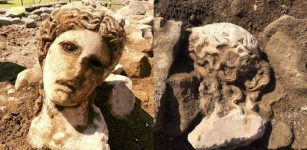 Magnificent 2,000-Year-Old Marble Head Of God Dionysus Discovered In Rome
Archaeology | Jun 17, 2019
Magnificent 2,000-Year-Old Marble Head Of God Dionysus Discovered In Rome
Archaeology | Jun 17, 2019 -
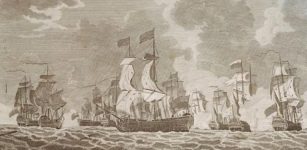 On This Day In History: Battle Of Lagos Took Place Between Royal Navy Of Britain and France – On August 19, 1759
News | Aug 19, 2016
On This Day In History: Battle Of Lagos Took Place Between Royal Navy Of Britain and France – On August 19, 1759
News | Aug 19, 2016 -
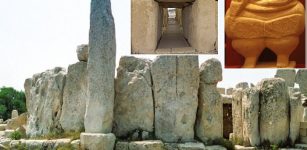 Hagar Qim: “Standing/Worshipping Stones” – Megalithic Complex In Malta Dated To 3600 – 3200 BC
Featured Stories | Feb 19, 2023
Hagar Qim: “Standing/Worshipping Stones” – Megalithic Complex In Malta Dated To 3600 – 3200 BC
Featured Stories | Feb 19, 2023 -
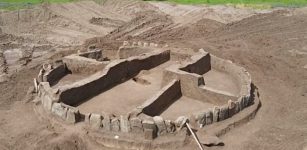 Ancient Secrets Of The Ukrainian Stonehenge That Is Older Than The Giza Pyramids Of Egypt
Featured Stories | Jul 17, 2021
Ancient Secrets Of The Ukrainian Stonehenge That Is Older Than The Giza Pyramids Of Egypt
Featured Stories | Jul 17, 2021 -
 Dragon Empress Wu Zetian Challenged Confucian Beliefs Against Female Rulers
Featured Stories | Dec 12, 2017
Dragon Empress Wu Zetian Challenged Confucian Beliefs Against Female Rulers
Featured Stories | Dec 12, 2017 -
 Middle Iron Age And Roman Period Buildings And Relics Discovered In Bedfordshire, UK
Archaeology | Feb 27, 2022
Middle Iron Age And Roman Period Buildings And Relics Discovered In Bedfordshire, UK
Archaeology | Feb 27, 2022 -
 Unexpected Discovery Of Huge Iron Age Roundhouse At Dinas Dinlle, Wales
Archaeology | Sep 9, 2019
Unexpected Discovery Of Huge Iron Age Roundhouse At Dinas Dinlle, Wales
Archaeology | Sep 9, 2019 -
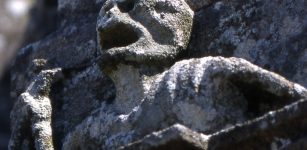 Ankou: Breton Angel Of Death That Delivers Souls To The Underworld
Featured Stories | Jul 18, 2021
Ankou: Breton Angel Of Death That Delivers Souls To The Underworld
Featured Stories | Jul 18, 2021 -
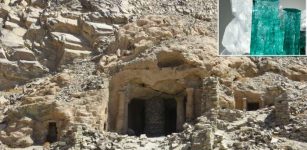 Emerald Production In Eastern Desert Of Roman Egypt – New Evidence
Archaeology | Apr 16, 2021
Emerald Production In Eastern Desert Of Roman Egypt – New Evidence
Archaeology | Apr 16, 2021 -
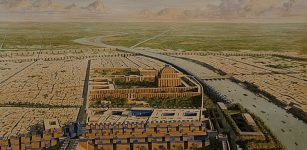 Sumerian God Enki – Commander Of Eridu
Featured Stories | Sep 8, 2015
Sumerian God Enki – Commander Of Eridu
Featured Stories | Sep 8, 2015 -
 Mysterious Yamacutah – A Sacred Native American Indian Shrine
Artifacts | Sep 18, 2020
Mysterious Yamacutah – A Sacred Native American Indian Shrine
Artifacts | Sep 18, 2020 -
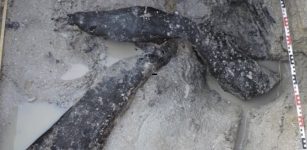 Discovery Of Half-Million-Year-Old Wooden Structure Shows We’re Wrong To Underestimate Our Ancient Relatives
Featured Stories | Oct 10, 2023
Discovery Of Half-Million-Year-Old Wooden Structure Shows We’re Wrong To Underestimate Our Ancient Relatives
Featured Stories | Oct 10, 2023 -
 Mysterious Ancient Underground King And Ruler Of The World – Who Was He? Part 1
Civilizations | Jul 25, 2018
Mysterious Ancient Underground King And Ruler Of The World – Who Was He? Part 1
Civilizations | Jul 25, 2018 -
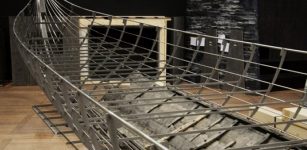 Roskilde 6 – Longest Viking Ship Ever Discovered Was 37-Meters Long And Carried 100 Viking Warriors
Ancient History Facts | Dec 26, 2016
Roskilde 6 – Longest Viking Ship Ever Discovered Was 37-Meters Long And Carried 100 Viking Warriors
Ancient History Facts | Dec 26, 2016 -
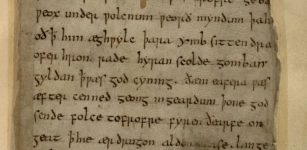 “Beowulf” – Old English Poem Was Probably Written By A Single Author – New Study
Archaeology | Apr 17, 2019
“Beowulf” – Old English Poem Was Probably Written By A Single Author – New Study
Archaeology | Apr 17, 2019 -
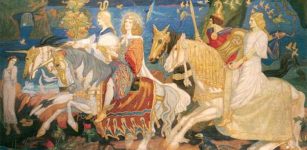 Tuatha De Danann: Mythical Race Of God-Like Beings With Supernatural Abilities In Celtic Mythology
Celtic Mythology | Feb 26, 2019
Tuatha De Danann: Mythical Race Of God-Like Beings With Supernatural Abilities In Celtic Mythology
Celtic Mythology | Feb 26, 2019 -
 Modern Humans Have Their Homeland In Botswana – New Study
Archaeology | Oct 29, 2019
Modern Humans Have Their Homeland In Botswana – New Study
Archaeology | Oct 29, 2019 -
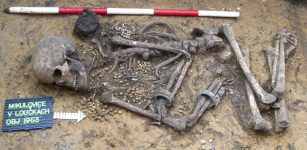 Central European Prehistory Was Highly Dynamic – New Study Shows
Archaeology | Aug 27, 2021
Central European Prehistory Was Highly Dynamic – New Study Shows
Archaeology | Aug 27, 2021 -
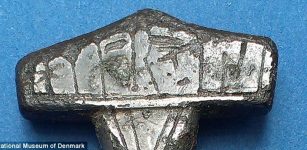 Remarkable Discovery Of Unusual “Hammer Of Thor” Finally Solves An Ancient Mystery
Archaeology | Jul 2, 2014
Remarkable Discovery Of Unusual “Hammer Of Thor” Finally Solves An Ancient Mystery
Archaeology | Jul 2, 2014 -
 Waru Waru – Ancient Andean Irrigation System Brought Back To Life
Ancient History Facts | Apr 28, 2018
Waru Waru – Ancient Andean Irrigation System Brought Back To Life
Ancient History Facts | Apr 28, 2018
